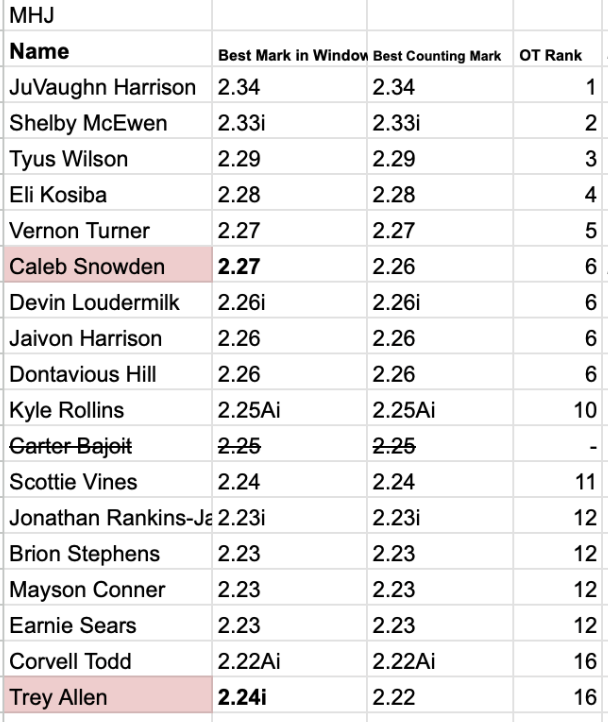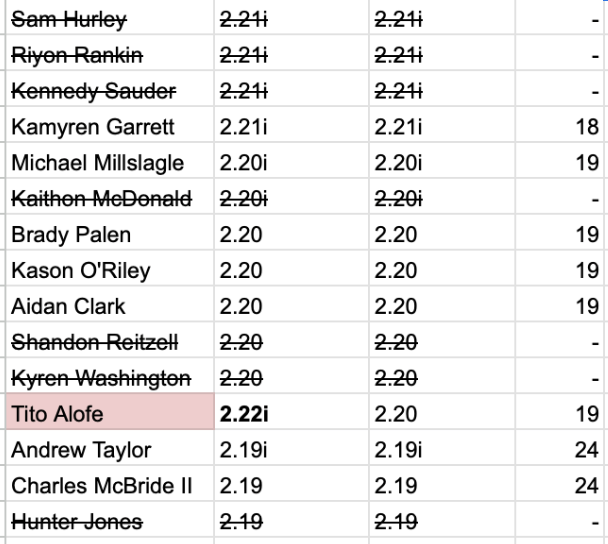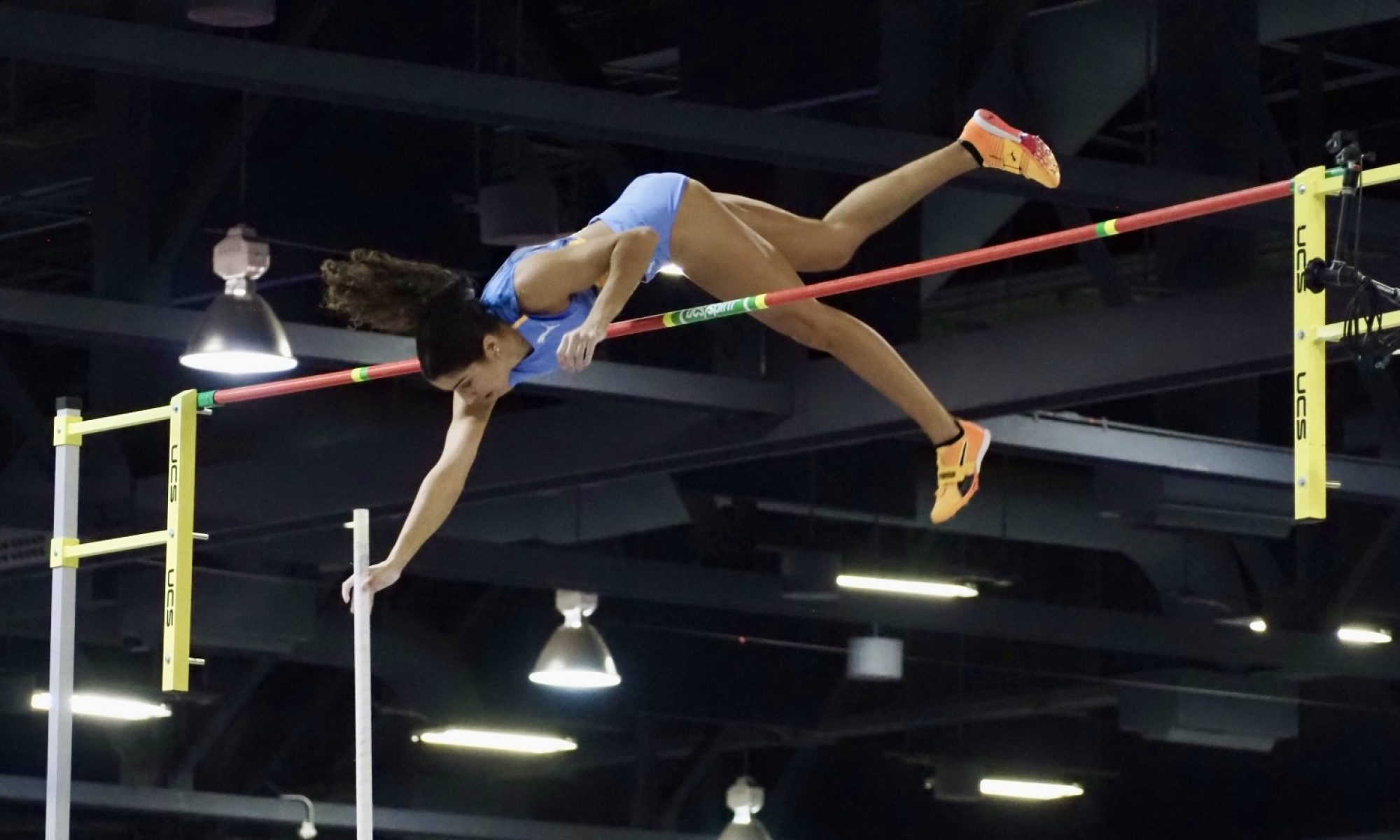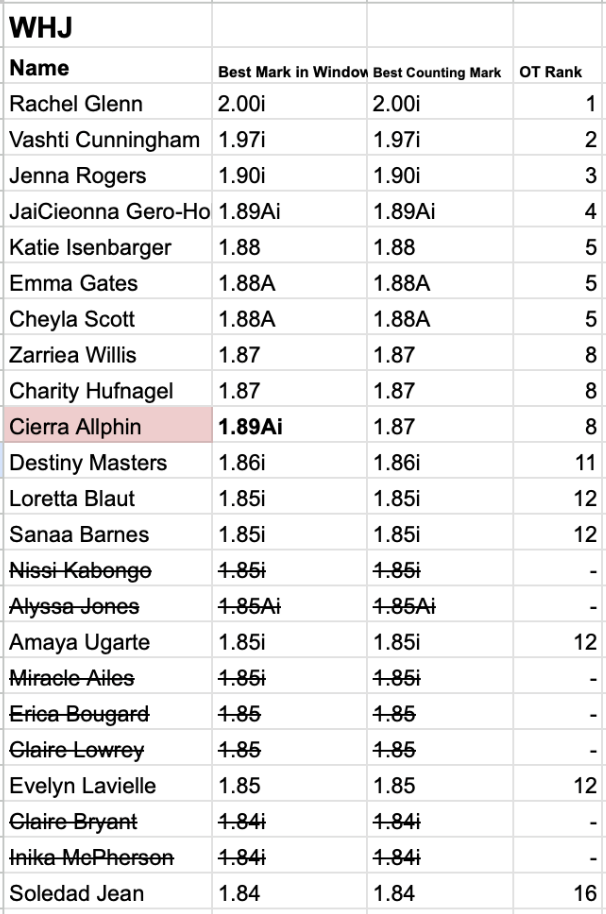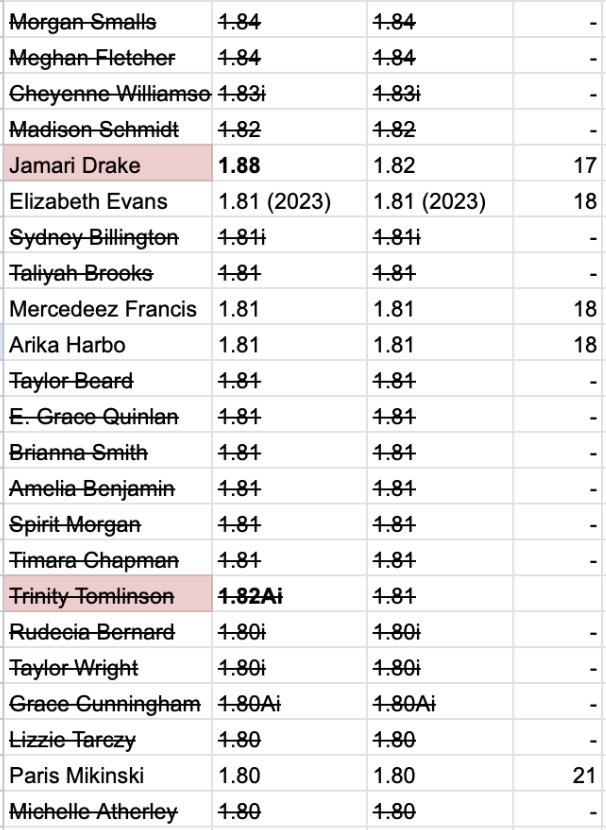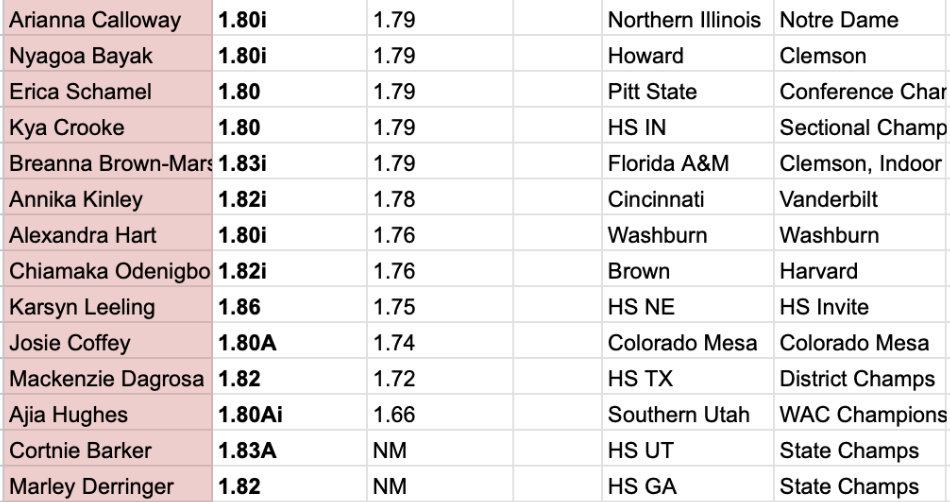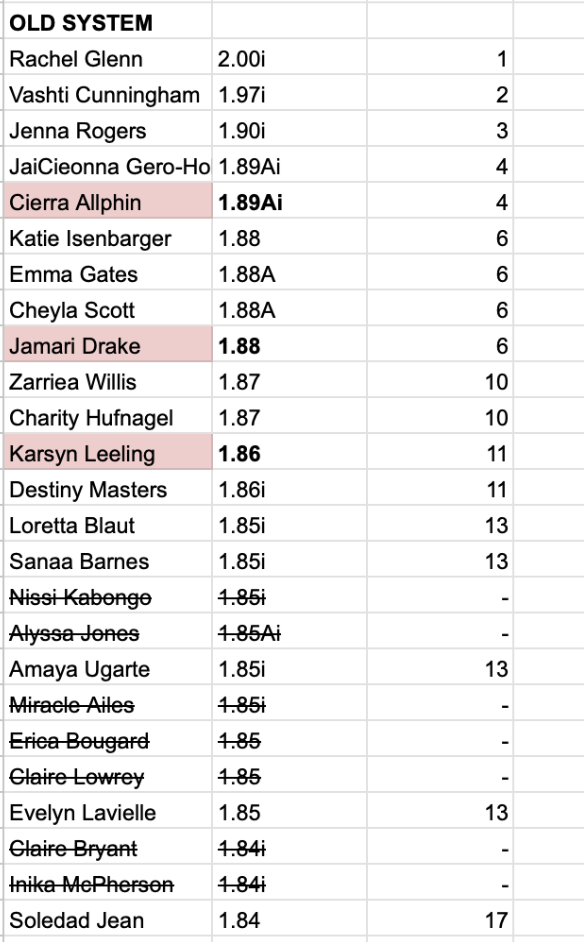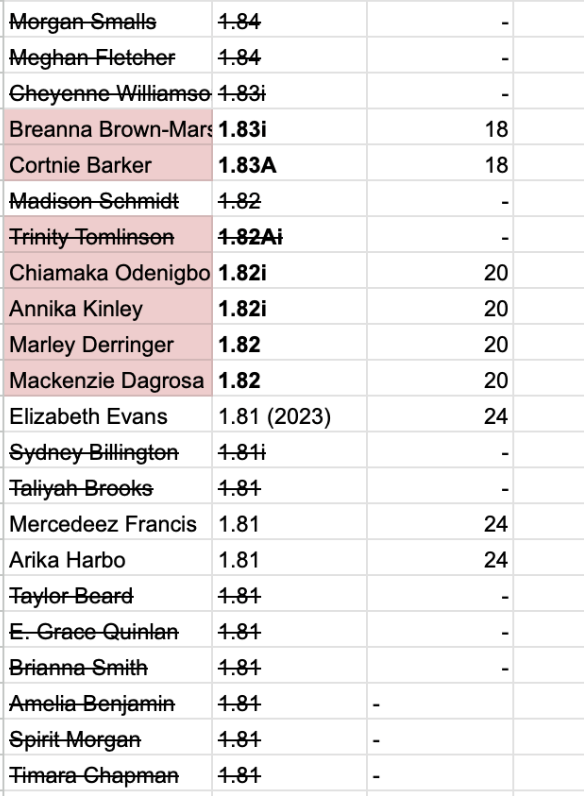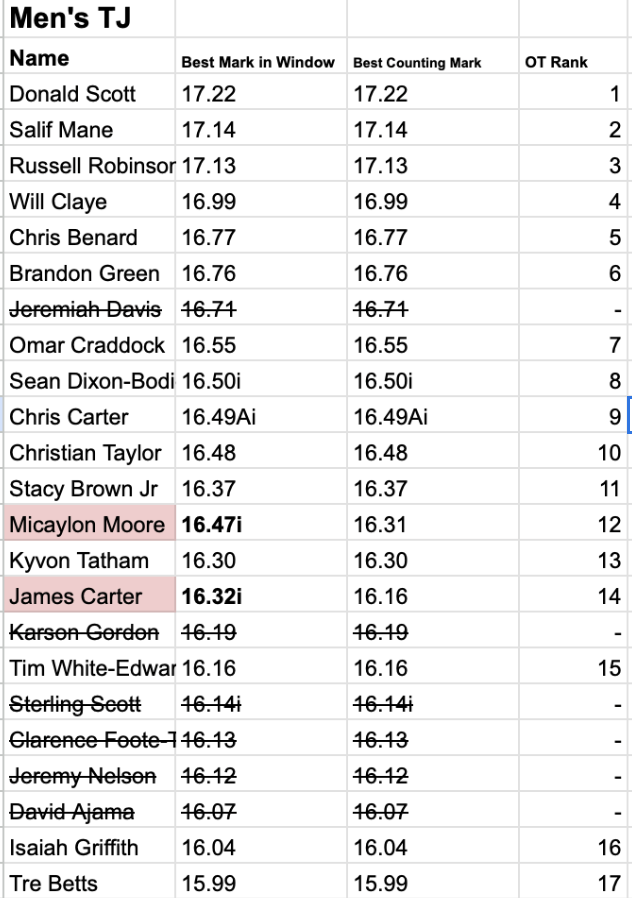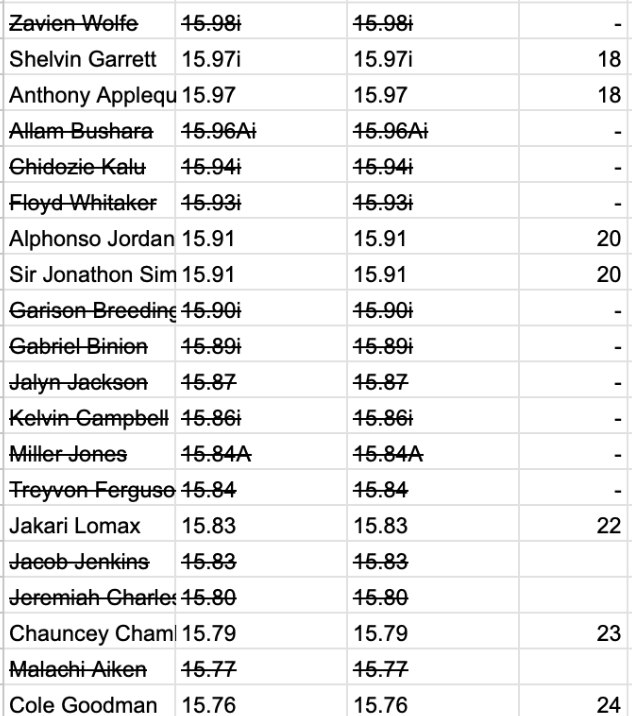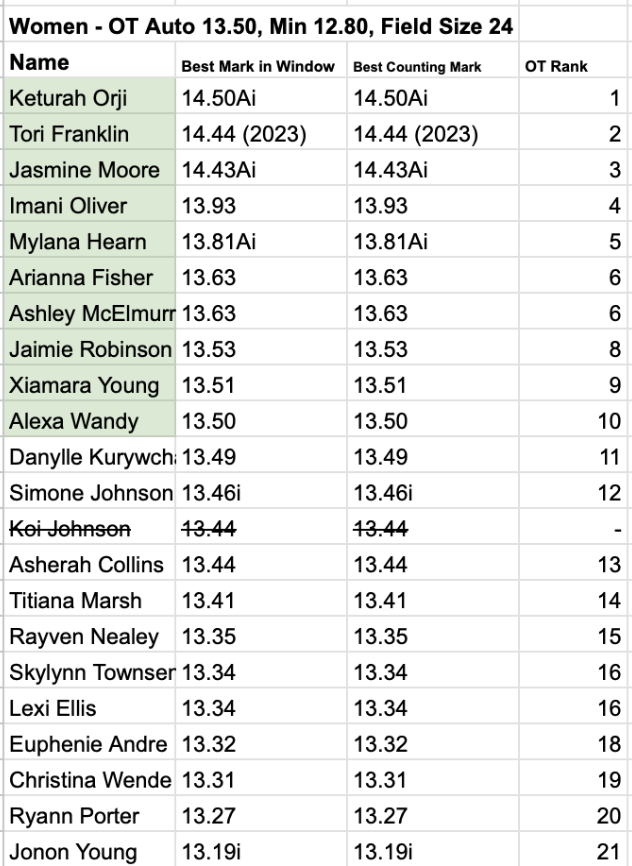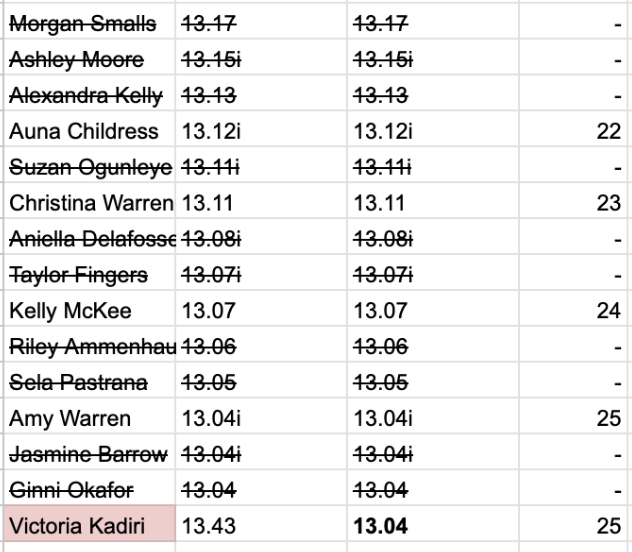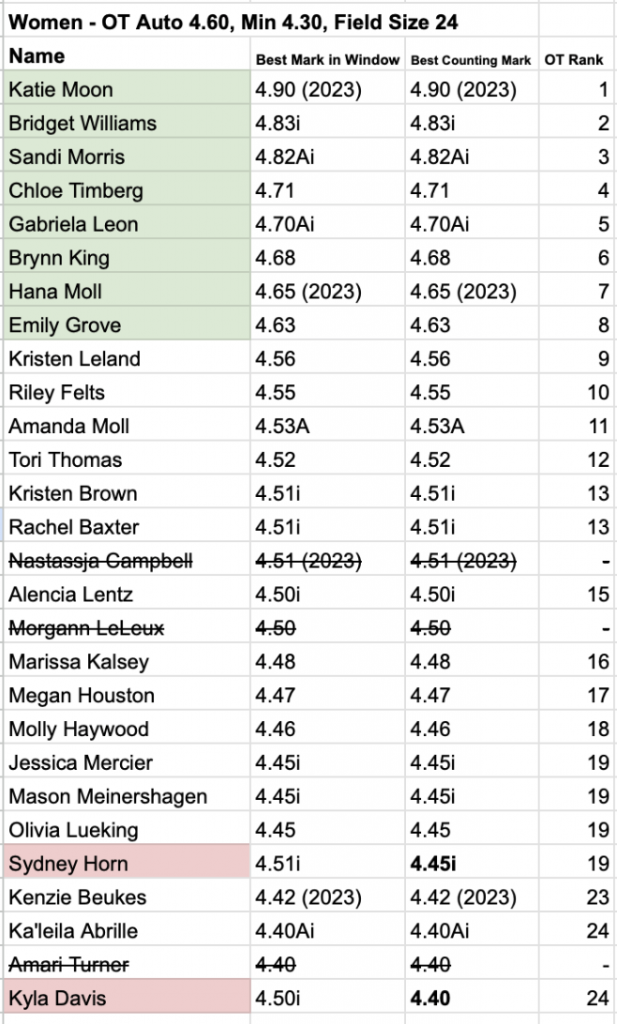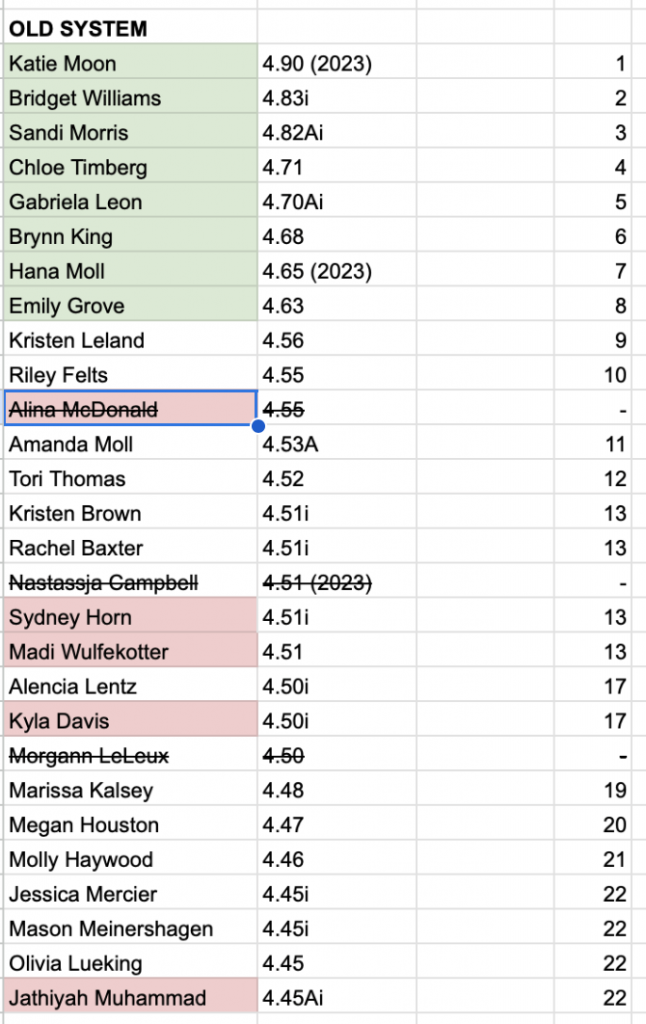Karsyn Leeling (NE) has the best high jump mark in the country for high school girls, at 6’1.50″/1.86m
It is tied for the 12th best mark among all US women this year, a mark that should rank high enough to compete at the Olympic Trials.
Karsyn’s PR was no fluke, she has also high jumped 1.85, 1.82 (2x), and 1.80 (4x) at HS meets this year
But you won’t see Karsyn at the Olympic Trials.
You would have seen her at every Olympic Trials from 1972-2021 and possibly earlier. The NFHS is a 5C member of USATF and in the past, marks from larger high school meets were always accepted by USATF for qualifying purposes.
Last year, World Athletics added a policy that meets must be on their World Athletics calendar for marks to count for their purposes, which include Olympic Games qualifying and world rankings.
A path was created for NCAA track meets to be added to this calendar. Many colleges did not add their meets, but most of the larger schools did.
No such path exists for high school meets, and even if it did, most high schools can’t afford the extra expense.
Whether or not World Athletics recognizes a mark has no bearing on whether or not USATF accepts it for Olympic Trials qualifying.
WA doesn’t care who we let in our Olympic Trials. Most countries don’t even have an Olympic Trials.
We know this is not about the World Athletics lists anyway because USATF *is* accepting marks from USATF-sanctioned meets that are *not* on the World Athletics calendar.
Karsyn competed in a USATF-sanctioned meet one week after her state championship. She won with a respectable mark of 1.75m, but that is below the Olympic Trials minimum entry standard of 1.80m.
From Michael Nussa, Director of High Performance at USATF:
“USATF is committed to ensuring fair competition for all athletes at the USATF Championships and Olympic Trials and this means athletes must qualify at meets operating under USATF/World Athletics Rules.”
For most events there is little to no meaningful difference between the competition rules at the high school, college and elite levels of our sport.
It is not inherently unfair to allow marks from college and high school meets to be used for qualifying.
In cases where “illegal” shoes were used, those marks should not be accepted, regardless of whether or not the meet was on the WA calendar.
Given how ubiquitous video footage of competition is these days, it is not difficult for an athlete to prove their shoes were legal.
The women’s high jump is not a strong event for Team USA at the moment. We only have two women with the OG standard and no one else currently ranked high enough to be selected.
Which is why it is so valuable for young talent like Karsyn to have the opportunity to gain experience.
The NCAA and AAU used athletes as pawns for decades until Congress stepped in, broke up the AAU and required the applicable NGBs to give the NCAA representation on their boards, an attempt to force all of the major players in each sport to play nice.
Karsyn is far from the only athlete impacted by this policy change.
In the women’s pole vault we have three athletes who would have qualified to the Trials under the old system, but are now left out in the cold, their best marks rejected.
High school and college athletes have no control over whether or not the meets they attend are on the WA calendar, but USATF sure is doing a great job of teaching them a lesson about competing in the “wrong” meets under the “wrong” rules.
